Read/WriteWeb Network Launches Amid iPhone Debut
Soon after Steve Jobs announces the iPhone in January 2007, I hire my first paid writer for Read/WriteWeb and launch a blog network. The new blogs are last100, about digital lifestyle, and AltSearchEngines.

There had been rumors of a combined phone and iPod device coming from Apple, but what Steve Jobs announced at Macworld on January 9, 2007, blasted away all expectations. Using his trademark showmanship, Jobs calmly announced that Apple was “introducing three revolutionary products,” which he described as an iPod, a mobile phone, and an internet communicator. He repeated these three ingredients several times, slowly building the anticipation and eliciting whoops and anxious laughter from the audience. Then he delivered the punchline: “These are not three separate devices; this is one device—and we are calling it iPhone.”
Jobs claimed the iPhone would be both easy to use and “way smarter than any mobile device has ever been,” taking shots at existing smartphone products like the Motorola Q, Nokia E62, Palm Treo, and the BlackBerry. Unlike those other phones, which Jobs said were merely “a little smarter” than cell phones and too hard to use, the iPhone didn’t have a QWERTY keyboard. Instead, Apple was introducing a patented touchscreen.
Jobs used the word revolutionary no less than ten times in the first fifteen minutes. But for once, the hyperbole about a new internet product was justified. Nobody had done a touchscreen smartphone before, and it would indeed change everything.
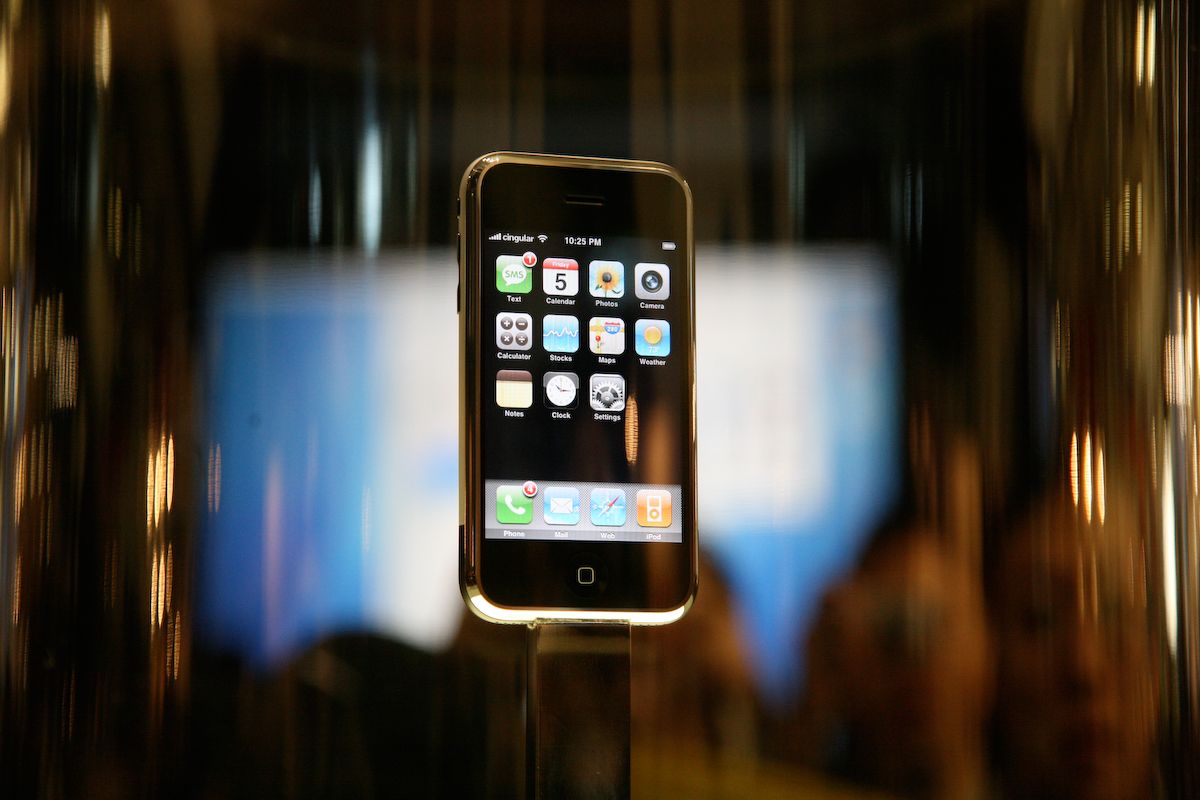
The one curious thing about the iPhone announcement, looking back on it seventeen years later, was that were was no mention of smartphone apps. Instead, Jobs pitched the Safari browser on iPhone as “the first fully usable HTML browser on a phone.” It was certainly a vast improvement over the limited Wireless Application Protocol (WAP) versions of websites that many of us were used to at that point, but it also didn’t quite live up to the “revolutionary” tag. We’d have to wait until the middle of 2008 for the launch of custom iPhone apps, via the App Store. For now, Jobs seemed to be promising that sites like Read/WriteWeb would become much more easily accessible via smartphone (he used the New York Times as his actual example).
Interestingly, just a week after the iPhone announcement, we saw a glimpse of the future of apps from a DVD rental service called Netflix. It launched a limited streaming service, with one thousand movies and TV series being made available to download on the internet over the next six months (it had seventy thousand titles on DVD). Up till this point, Netflix had helped popularize Web 2.0 via its website, which featured a slick user interface, algorithmic movie recommendations, ratings, and a “friends list” for sharing movie trivia. But now it was inching into the next era of Web 2.0, what we’d soon come to know as streaming and apps (although the word streaming wasn’t yet being used—Netflix called it “electronic delivery”).
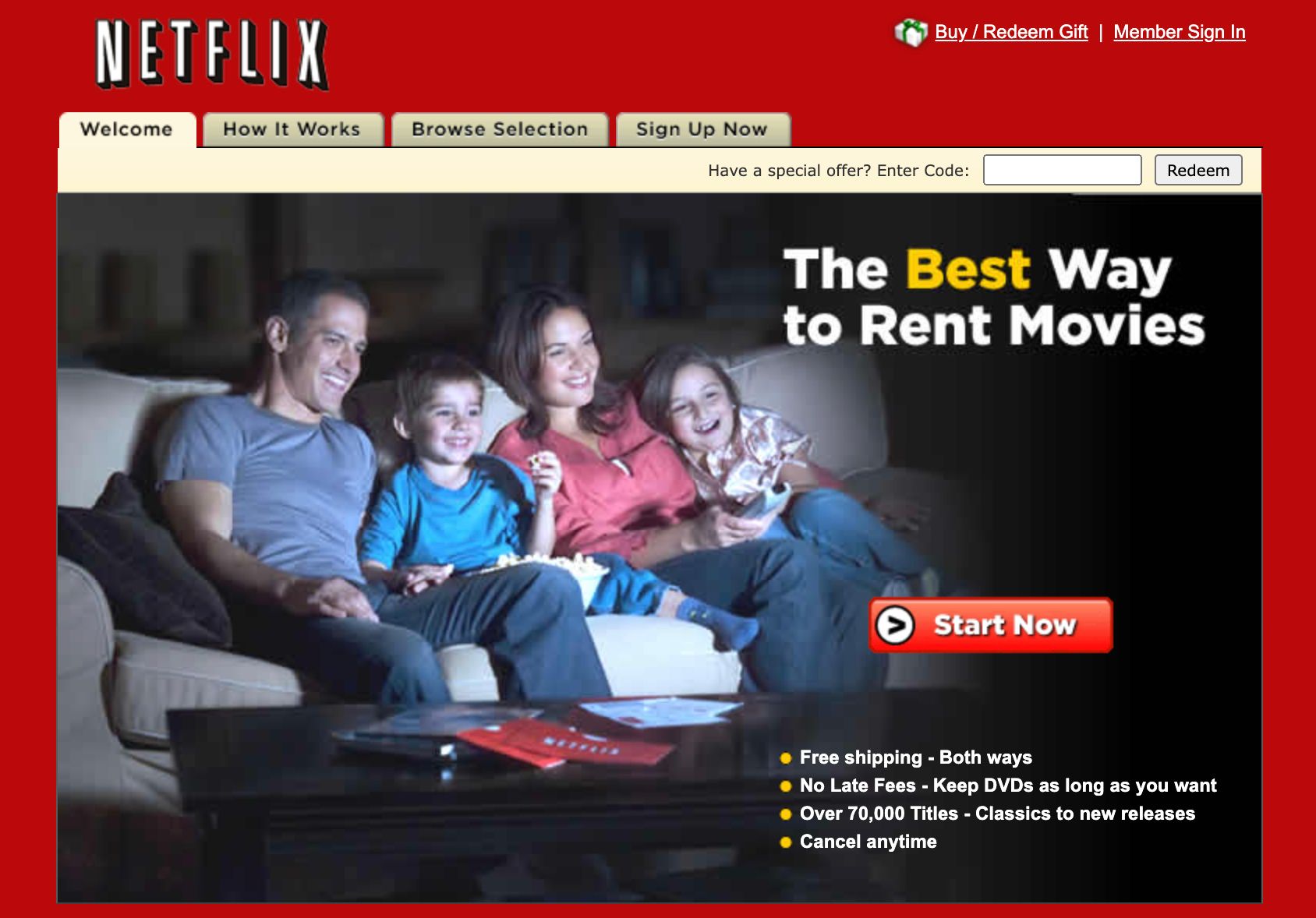
The iPhone was eventually released in the United States at the end of June 2007, but it wasn’t available anywhere else in the world at that time. I had to wait till October, when I attended the Web 2.0 Summit, to buy one. I also had to “unlock” the iPhone before I could use it on my local mobile-phone network, which I did as soon as I got back to New Zealand. I needed tech help to do it, as it involved “jailbreaking” it, installing Secure Shell, resetting the root user’s password, and all manner of other geekery.
Since the iPhone wasn’t widely available outside the States until July 2008, with the global launch of the second-generation iPhone (as well as the App Store), 2007 was a transition year for the smartphone revolution. Apple had opened the door to a mobile future with its January 2007 announcement and mid-year US release, but Web 2.0 remained focused on desktop computer users for the remainder of that year.
Meanwhile, Read/WriteWeb continued to ramp up, with January 2007 my highest-traffic month ever. RWW got around six hundred thousand page views and had more than fifty thousand RSS and email subscribers by the end of the month. Soon after, I got my first newspaper writeup in my home country: the New Zealand Herald published a profile of me in early February 2007.
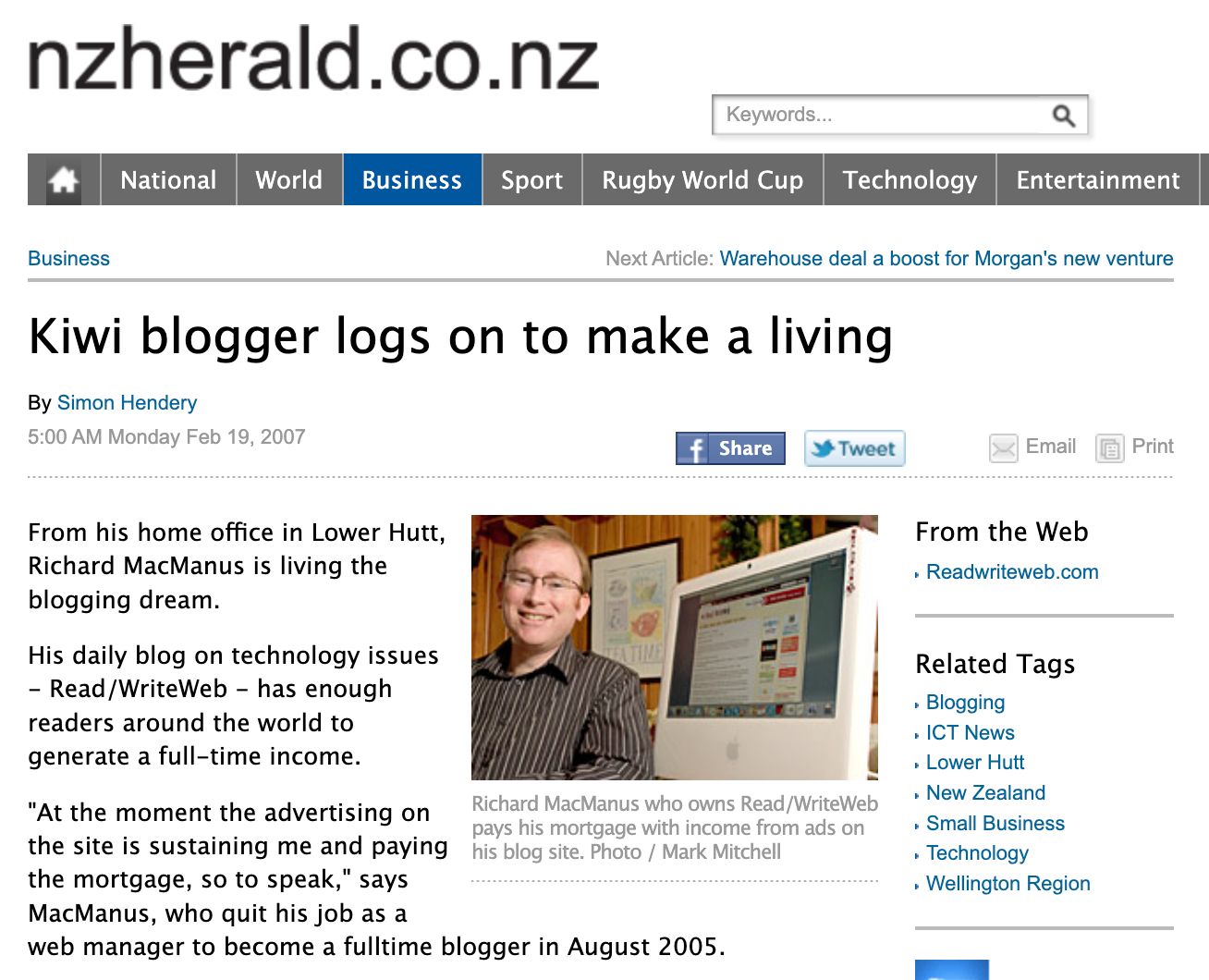
I was on a roll, but I also knew I needed more help on the writing side. In early March I published a guest post by a young freelance writer from Rhode Island named Josh Catone. He’d been a regular commenter on RWW articles and had initially reached out to offer a guest post about early TV streaming services, entitled “Internet Killed the Television Star: Reviews of Joost, Babelgum, Zattoo, and More.” The post did well, and I asked if he’d like to become a regular contributor. He eventually became my first paid writer, which I announced on the site in mid-May.
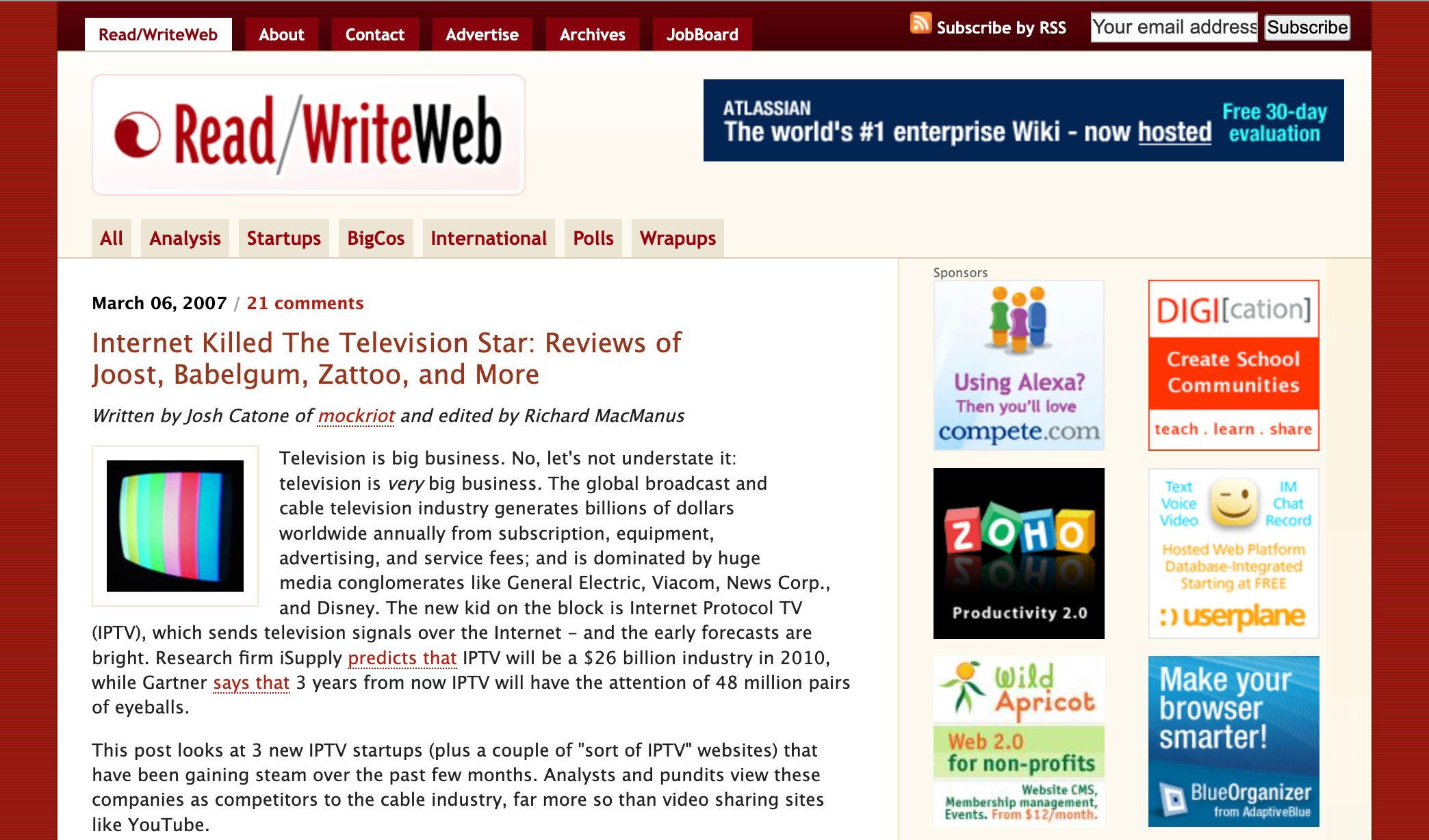
I also began to get more organized by setting up a Basecamp project. Basecamp was project-management software by 37signals, a trendy software company from Chicago known for its Web 2.0 theorizing via blogging and conferences. (It had also developed Ruby on Rails, a popular open-source web application framework.) I pitched the new Basecamp to my writers as “a place where all the R/WW authors can discuss things and note down post ideas.” In the beginning, we only used the Messages and To Do sections, so in effect it was a private forum rather than a full-blown intranet.
Shortly after announcing Josh as a daily news writer, I announced the first network blog to launch under the Read/WriteWeb banner: last100, a site about “digital lifestyle” services (what we now call streaming apps). It was to be written by a UK journalist around my age named Steve O’Hear. I’d decided to adopt Mike Arrington’s blog-network formula and create separate sites; unlike him, I (stupidly) didn’t tie the names into the main brand. Everything in Mike’s network had crunch in the site title, and in hindsight I should’ve named each of my network sites ReadWriteSomething. I later rectified this, but in May 2007 they had completely unrelated brand names.
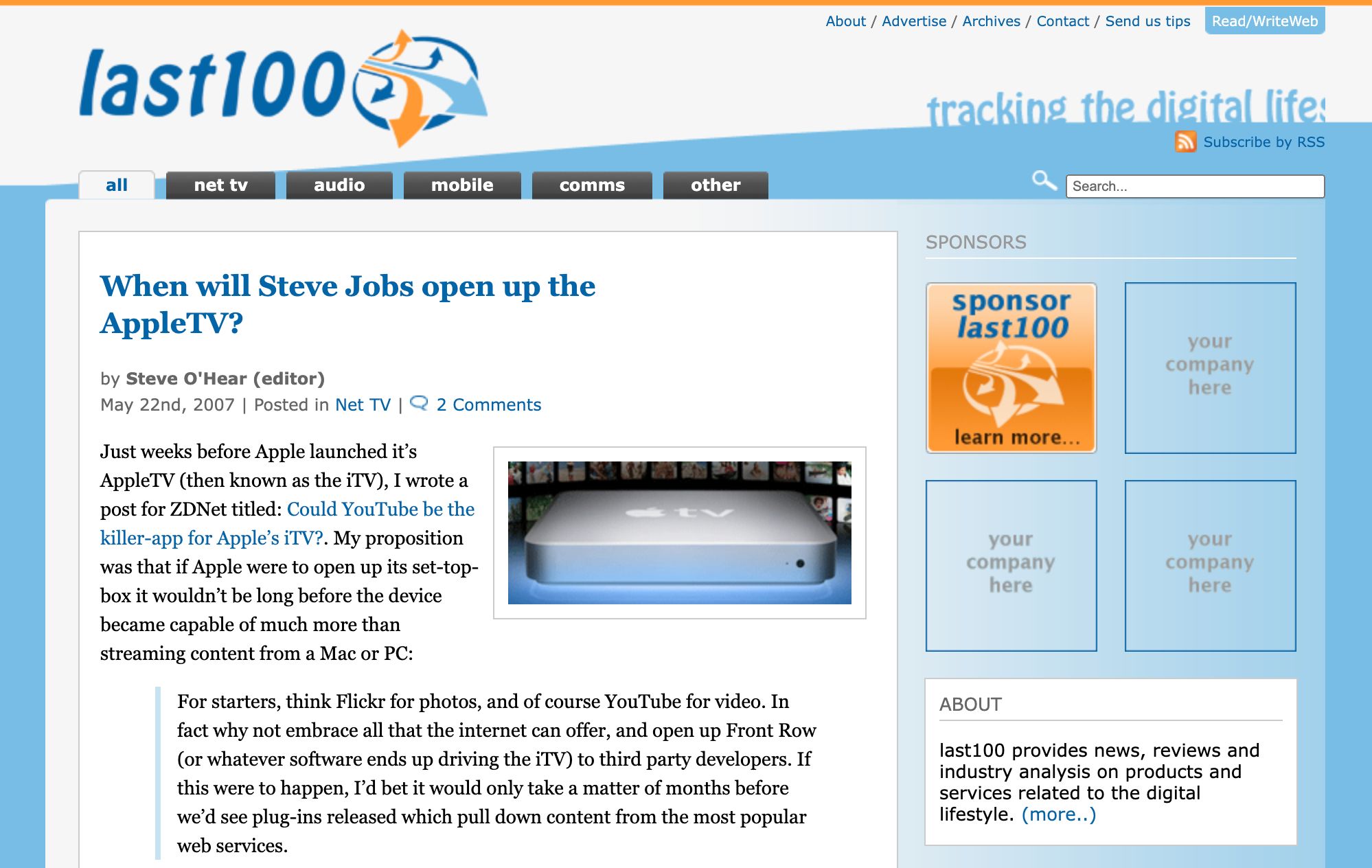
Last100 was Steve’s idea, and he had pitched me the concept at the end of March. I’d gotten to know him through Micro Media Corp, where he was one of the regular contributors. He’d also produced a documentary film about his visit to Silicon Valley, called In Search of the Valley, which he’d released independently last September. He had a lot of initiative, and I liked his pitch for last100. He explained that the name referenced the “last 100 feet” problem, the gap between the typical home’s computer and its living room TV set (remember, this was before smartphones bridged that gap). The idea was to write about emerging areas like online video and digital music.
Steve and I went 50/50 on last100: he would be responsible for writing and editing it, and I would take care of the business side. As I say, I regret not tying the brand into RWW more, especially since it made it more difficult to land sponsors. But regardless, we launched the new site in May 2007.
The second RWW network site was AltSearchEngines, or ASE, as we called it, a 50/50 collaboration with Charles Knight. It launched in early June 2007. Charles, who was roughly ten years older than me, had been writing since January a monthly RWW post called “The Top 100 Alternative Search Engines” (the word alternative just meant search engines other than Google). It was a popular feature, so there was clearly reader demand for regular news about search engines. ASE was the first network blog idea—I’d broached it to Charles in March and suggested the domain AltSearchEngines.com. Again, what was I thinking? It should’ve been ReadWriteSearch.com!
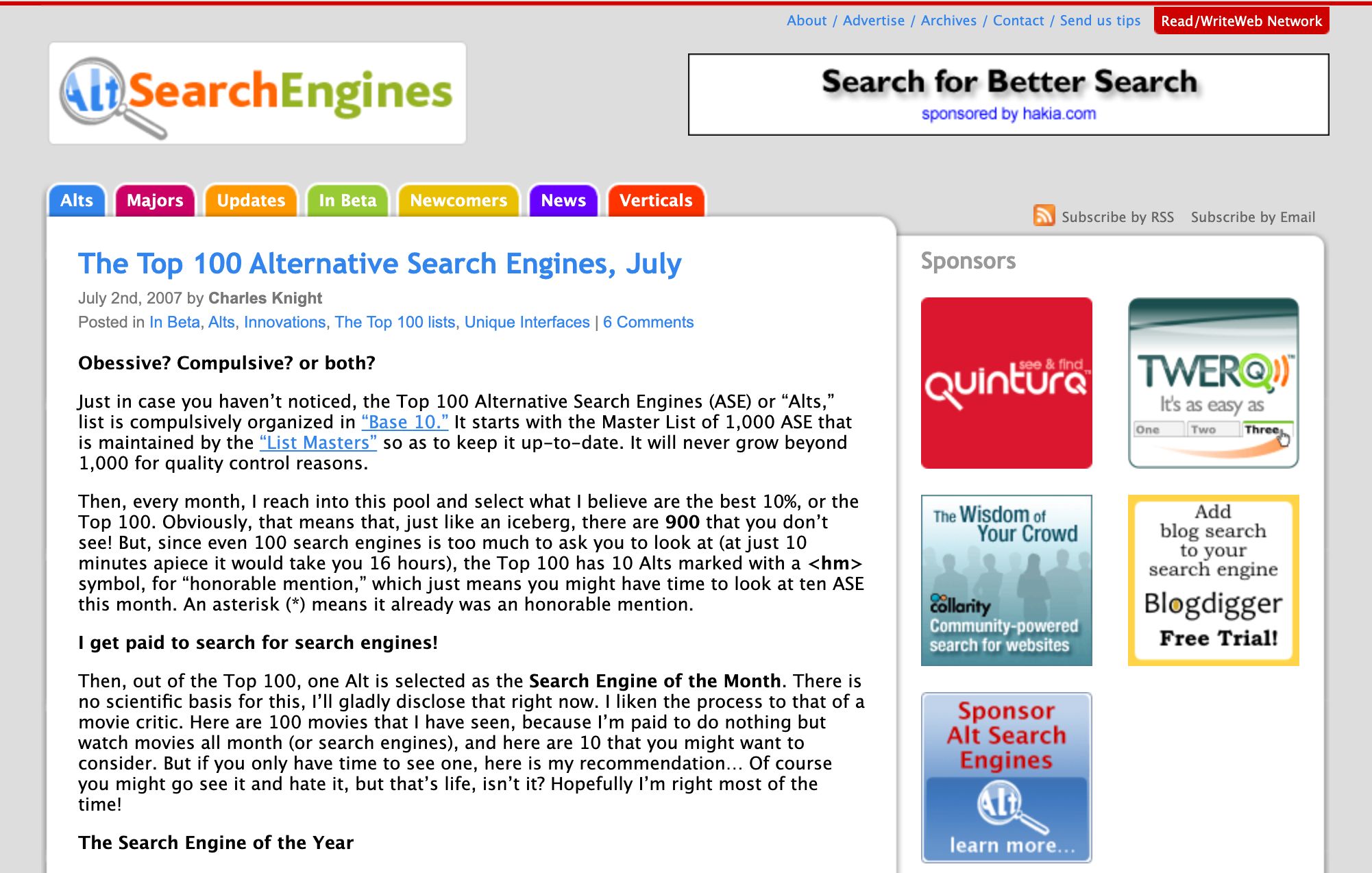
Of the two new network blogs, ASE ended up doing far better. Right from the start, it had a clear agenda, potential sponsors, and a built-in audience in the form of hundreds of entrepreneurs who were trying to compete with Google. I wrote in my launch post that our goal was “to make it the definitive destination for everything related to alternative search engines—over 1,000 of them!” The site motto, which came from Charles, was also a nice teaser for RWW readers: “The most wonderful search engines you’ve never seen.”
I also collaborated more closely with Charles than I did with Steve. Partly that was a time-zone issue, as Steve was in the UK and so we only got to talk in the early mornings or evenings. Charles was from Charlottesville, Virginia—on the US East Coast—so we had more time to sync up. Steve was also more capable of setting his own agenda, whereas Charles needed some handholding in terms of how to write blog posts.
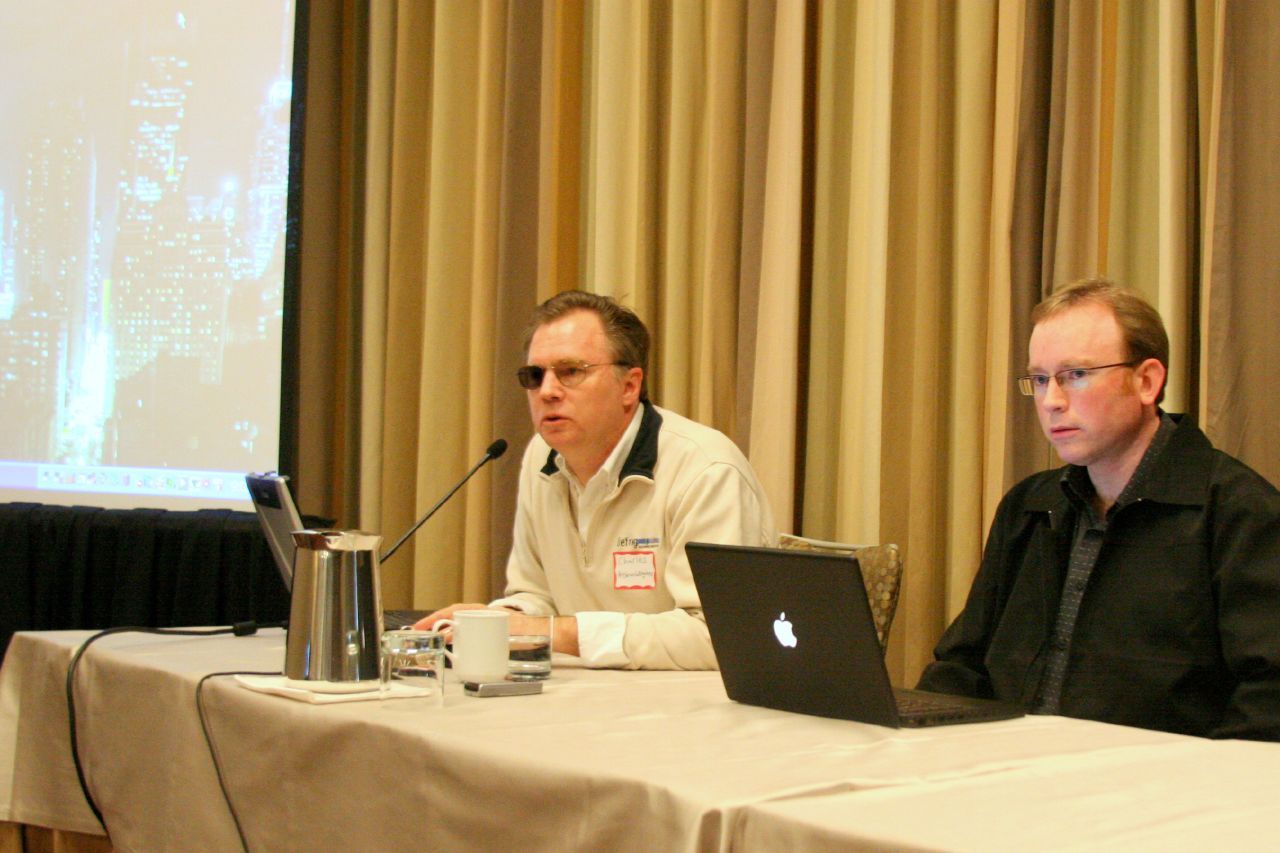
The key difference between the two sites was that ASE very quickly found its audience, and had six paying sponsors before the end of its first month. Charles’s top-100 list was the main reason for the instant success of ASE, as he’d cultivated its loyal niche audience on RWW over the past six months. It turned out there was a big demand, relatively speaking, for a blog about search engine startups. He was also great at networking with these startups—he was genuinely passionate about the search community and made a big effort to understand and cultivate it.
Last100 was harder to monetize—we had just two or three sponsors at any one time during the first few months. Steve was writing excellent posts, and the content was more similar in style to RWW than what Charles wrote. In theory, it was a good idea to launch a RWW-style analysis blog about the early days of online streaming, but in practice it wasn’t easy to rally a community behind this content in 2007. What people liked about RWW—that it explained the Web 2.0 revolution and put the technology in the context of societal shifts—didn’t seem to translate to “digital lifestyle” products. In hindsight, it was probably just too early for last100: the streaming revolution wouldn’t kick into gear until several years later.
This post is part of my serialized book, Bubble Blog: From Outsider to Insider in Silicon Valley's Web 2.0 Revolution. View table of contents.
Next up: 022. Web 2.0 Expo 2007
Buy the Book
My Web 2.0 memoir, Bubble Blog: From Outsider to Insider in Silicon Valley's Web 2.0 Revolution, is now available to purchase:
- Paperback, US$19.99: Amazon; Bookshop.org
- eBook, US$9.99: Amazon Kindle Store; Apple Books; Google Play
Or search for "Bubble Blog MacManus" on your local online bookstore.